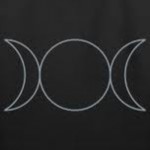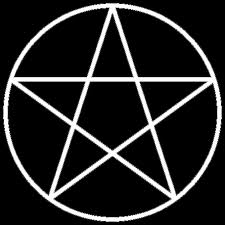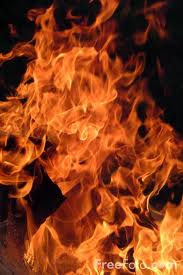Of all things I looked forward to this month, I probably geeked out over the altar the most.
While Wiccan’s of a particular tradition might have similar features in their altars, this sacred space is much like a Wiccan’s spiritual fingerprint: No two are ever exactly the same. A Dianic Wiccan is one who places a higher or even exclusive focus on the female aspect of the divine, while a Solitary Witch or Wiccan will practice alone, having no official tradition or coven (group of Witches or Wiccans), and will often use methods from many paths.
Although my practice centers around the Fey tradition (because my Mentor is a Fey Wiccan), I will practice this month as a solitary and so will explore Shamanism as well.
As I mentioned, each Wiccan’s altar is unique and highly personal. Wicca is a faith/path based on experience and feeling. While there are common elements to an altar, if it doesn’t feel right or work, don’t use it! Please note that all altar items should be properly dedicated and purified before use. Here’s a good article about these techniques. Some of these common features include:
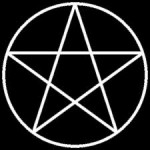 A Pentacle: The cirlce upon which a five-pointed pentagram rests. These carry multiple meanings, depending on the individual. In many cases, the pentagram represents the union of the four physical elements (Air, Fire, Water,Earth) as well as Spirit. Spirit is recognized at the top point of the pentacle, while Air and Fire might occupy the right hand points (often the side of the God), and Water and Earth occupy the left (often the side of the Goddess).
A Pentacle: The cirlce upon which a five-pointed pentagram rests. These carry multiple meanings, depending on the individual. In many cases, the pentagram represents the union of the four physical elements (Air, Fire, Water,Earth) as well as Spirit. Spirit is recognized at the top point of the pentacle, while Air and Fire might occupy the right hand points (often the side of the God), and Water and Earth occupy the left (often the side of the Goddess).
The Goddess: Often represented by the moon and its waning, full, and waxing phases, the Goddess represents the female aspects of reality. She may also be represented by a pregnant image or a simple white candle. Her elements are water and earth. She is the source and sustainer of life, the deep ocean of wisdom, fertile, a wondrous mystery, and the mother of all.
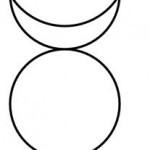 The Horned God: The consort of the Goddess, he represents the spark of life. He is the hunter and the hunted, the sun and the stag. Represented by the elements fire and air, the male aspect of the divine is often passionate and intense, he occupies the transitional space between life and death as well as the seasons. His place on the altar is represented by many items, including a red candle, a statue of a horned man, or other symbols.
The Horned God: The consort of the Goddess, he represents the spark of life. He is the hunter and the hunted, the sun and the stag. Represented by the elements fire and air, the male aspect of the divine is often passionate and intense, he occupies the transitional space between life and death as well as the seasons. His place on the altar is represented by many items, including a red candle, a statue of a horned man, or other symbols.
These are the major elements one may find in a typical Wiccan altar, however each is free to represent the elements and divinity as they wish. Because this personal aspect is so important to the faith, some Wiccans like to purchase unique, hard-to-find items for their sacred space. This is cool, but I had another idea…One that my Mentor loved.
I decided to make everything on my altar by hand.
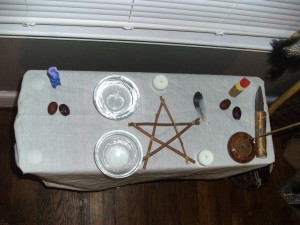
This is my altar as it currently exists. Some features may change as I find new items in nature or discover new aspects of my personal craft. You’ll notice the pentagram (a pentacle has the circle around the points as shown above) in the center, hand-made from maple twigs and waxed thread. The upper right point, the element Air, is represented by a pigeon feather I found in “the warehouse” (a personal place of meditation). The lower right point, Fire, is represented by a votive candle. To the right of Fire you’ll notice incense. Incense is often a symbol of Spirit, however I often lite it (at this point) as a sort of initiatory sequence to begin each ritual. On the lower left, we have Water, represented by a glass bowl of, well, water! Above that we have Earth, represented by a bowl of sea salt. Some may offer fruit or flowers to the deities. Again, the representations associated with the five points of the pentagram vary among different practitioners.
Now for a closer look at the other hand-made items:
 The Athame: A symbol of the element Fire, and the God himself, the athame usually occupies
The Athame: A symbol of the element Fire, and the God himself, the athame usually occupies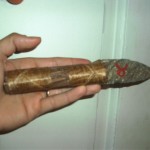 the right-hand side of the altar (East) and is used for various tasks. One of the most important uses is to “cast a circle,” or created the sacred space of one’s ritual. This may be performed by using the double-edged athame to “draw” a circle around oneself and the altar items either in the air or on the ground itself. As a channel for energy, it is also used for “calling the quarters,” or invoking the elemental guardians of the four directions within one’s circle or altar. I constructed my athame out of oak, slate stone (only rock I could find), and waxed thread. It also symbolizes cutting to the truth or choice.
the right-hand side of the altar (East) and is used for various tasks. One of the most important uses is to “cast a circle,” or created the sacred space of one’s ritual. This may be performed by using the double-edged athame to “draw” a circle around oneself and the altar items either in the air or on the ground itself. As a channel for energy, it is also used for “calling the quarters,” or invoking the elemental guardians of the four directions within one’s circle or altar. I constructed my athame out of oak, slate stone (only rock I could find), and waxed thread. It also symbolizes cutting to the truth or choice.
My Mentor explained that the great thing about creating my own altar pieces is that my own energy flows into each piece via the act of creating itself. As I spent hours grinding, cutting, and sanding however, I ended up putting more than just creativity into each piece…
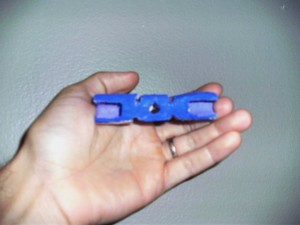 For the Goddess, I decided on the symbol illustrating the three main phases of the moon. It doesn’t look like much, but I spent a lot of time carving the grooves of this piece. I literally colored this representation of the Goddess with paint, sweat, and blood through an injury where the drill bit slipped and cut my finger.
For the Goddess, I decided on the symbol illustrating the three main phases of the moon. It doesn’t look like much, but I spent a lot of time carving the grooves of this piece. I literally colored this representation of the Goddess with paint, sweat, and blood through an injury where the drill bit slipped and cut my finger.
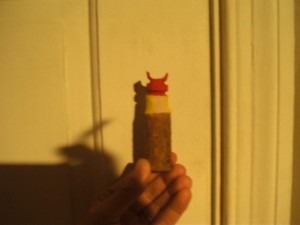 Here is the God figure. Cut from the same branch as the Goddess, we have the round sun disc in red with the horns on top. He occupies the right side of the altar while the Goddess sits on the left.
Here is the God figure. Cut from the same branch as the Goddess, we have the round sun disc in red with the horns on top. He occupies the right side of the altar while the Goddess sits on the left.
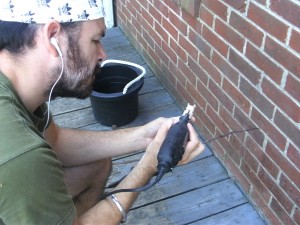
So there’s a brief overview of this Wiccan’s altar. As I said, each one is highly personal and unique to the individual. This is a sacred space that should be respected and treated with great care. What I noticed in crafting my altar is that in a very real way, the entire space is a representation of the universe itself. You have all the elements as well as spirit and the divinity all in one, humble space. When I meditate on the God and the Goddess as well as the elements, I hold all the world and the cosmos in my mind and in the energy flowing through me.
Very cool.
Keep in mind that my altar will change as I grow in Wicca this month. That’s okay! Wicca is a creative tradition and highly adaptive to one’s personal tastes. There are no hard, fast rules here other than personal responsibility and/or the nuances of the tradition one follows. I will certainly enjoy this freedom of expression as I explore my world with Wiccan eyes.
What sort of personal implements occupy your spiritual space? Are any hand-crafted? Perhaps you have some that were passed down, generation to generation? I’d love to hear about you honor the Divine and the elements!
